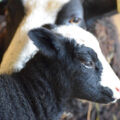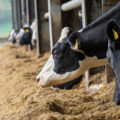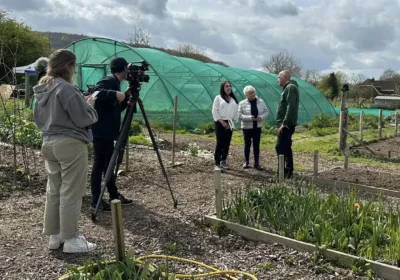by Ruth Kimber
I KNOW I keep on about the farm gate milk price, but really isn’t it time dairy farmers were properly rewarded for the hard work, big investment and long-term commitment that dairying demands?
Our son Tom was on the BBC Points West News, having been contacted to give his point of view. He pointed out the facts and figures – at the current rate we will lose £437 a day. How can we make up the difference – all our costs are significantly higher than when the price was 38ppl a year ago, which is now what it has gone back to. Some of the higher costs have come back a bit but many remain high, including wages and electric contracts.
One gets tired of the same old, same old. Milk is used as a draw, usually at the back of a supermarket to lure customers through the store, and then price wars begin between the supermarkets offering ever cheaper milk – at the farmer’s expense. The truth is many shoppers don’t know the price of the milk they have put into their basket, they just know they want it and that it is good food value.
At last, we let the cows out by day and they were very pleased. They seem to know when the gate is about to be opened. They were all waiting, stretching their necks to see what was going on. However, they don’t get as excited as when we were children and the milking cows were housed in cow stalls.
They were tied into a stall – they could get up and down comfortably and were let out once a day to exercise and for the cowman – our fathers – to clean out the muck by pitchfork and wheelbarrow. The cows never seemed to mind coming back in – in fact, they took ownership of a particular stall, using the same one all winter.
Their food was carried by hand to the manger in front of each cow. Bedding was also a hand job, sawdust or straw. The cows were also milked in the stalls, firstly by hand, then in the late 1940s the first milking machines reached the market. This speeded up milking time – there was a vacuum pipeline in front of the cows where the bucket plant was attached, this ran the pulsators and the vacuum. When the bucket was filled, the top workings was transferred to an empty bucket and the full bucket of milk was carried to the dairy, where it was poured into the clean 10 gallon (45.5 litres) churns – health and safety had deemed the 17 gallon (77kg of milk) churns too heavy!
Next it was cooled using an in-churn cooler, a piece of equipment that had a long coiled pipe that went into the milk with a mushroom-shaped top with holes along the outside edge. A cold water hose was attached to the top of the mushroom, the cold water travelled down the pipes in the church and the pressure rotated the coils. The water came back up and was directed to the inner side of the mushroom and forced through the little holes on the rim, the water trickling down the outside of the church, cooling the milk from the outside as well.
The milk from my parents’ farm was collected by lorry and taken to Wincanton’s Cow & Gate factory to be made into baby milk powder. I can remember the sound of the lorry full of churns, fastened in by chains on the outside – the music the lorry made with the churns and chains varied as the empty churns were replaced by full ones.
Paul’s family sold their milk to the Barbers, a cousin of the Ditcheat Barbers, who made cheese in South Brewham, then moved to Lovington as the business grew. Sadly, they no longer make cheese, but, of course, their cousins still do.
There were fewer cows per farm then, with many more dairy farms, but more hard hand work.
Kimber’s Farm Shop, The Kitchen at Kimbers, Somerset Trading Barn, Linley Farm, Charlton Musgrove BA9 8HD Phone: 01963 33177; www.kimbersfarmshop.co.uk; info@kimbersfarmshop.co.uk. Opening times Tuesday-Friday 8.30am-5pm, Saturday 9.30am-4.30pm.











Leave a Reply